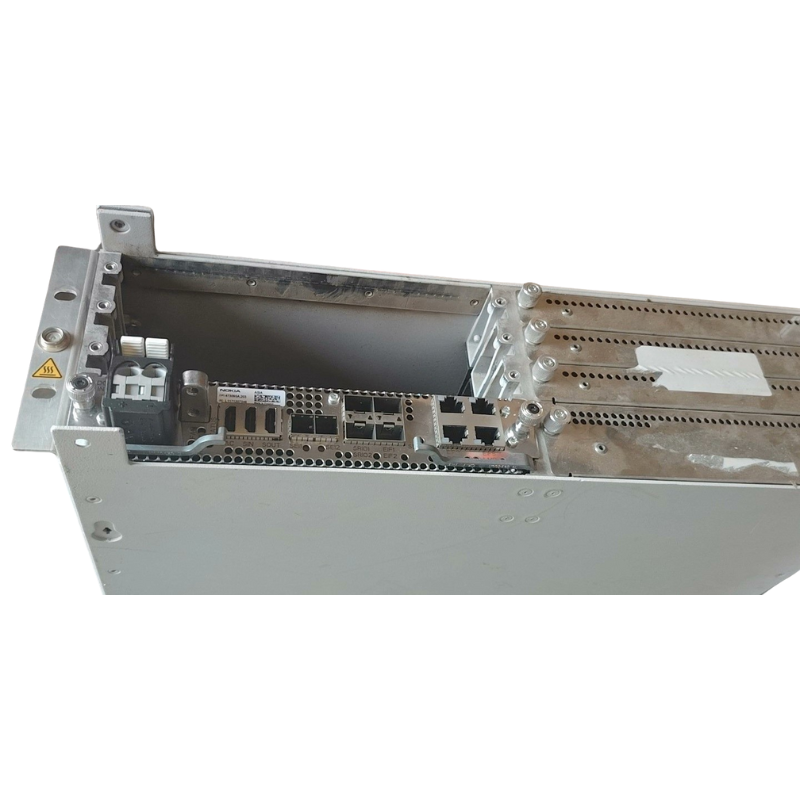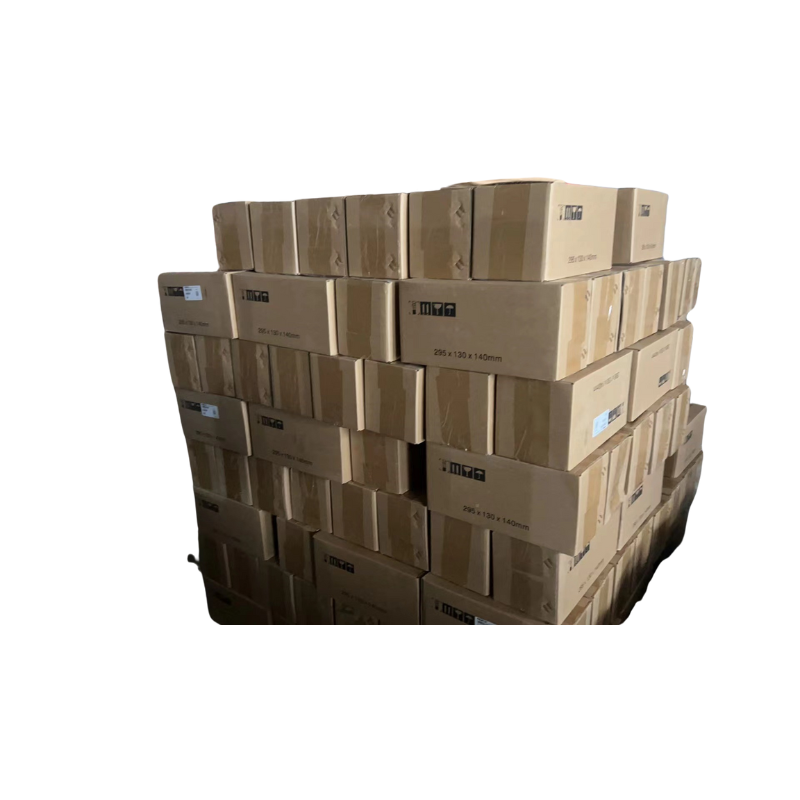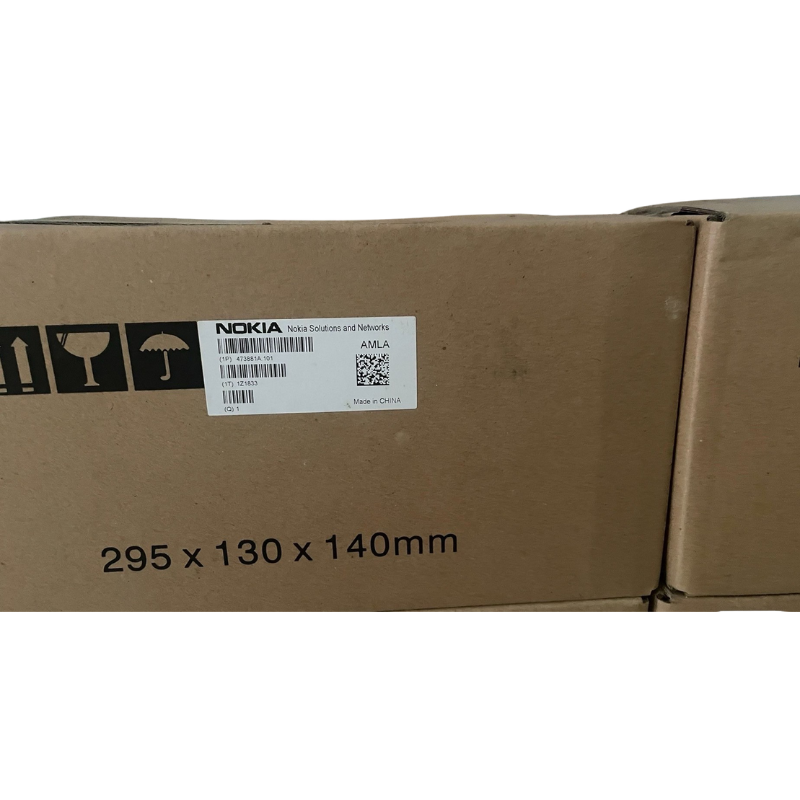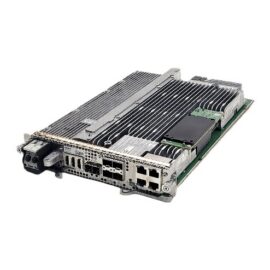Nokia AMIA PN 473098A
View cart “Nokia AREA 474198A” has been added to your cart.
Nokia AMIA PN 473098A
New products that you will definitely like
Nokia ASIA 473095A
Request For Quote
Nokia AMLA 473881A
Request For Quote
Original NSN Nokia AirScale RRH 2T4R PN 471649A
Request For Quote
Nokia AREA 474198A
2,250.00 $Product Description
Benefits of Nokia AMIA PN 473098A
Increased Baseband Capacity: The primary benefit is the significant expansion of the baseband processing capacity of the AirScale BBU. This allows the base station to handle more users, higher data throughput, and a greater number of connected devices simultaneously.
Support for Higher Cell Density: With increased processing power, the BBU equipped with the AMIA module can efficiently manage a larger number of cells or sectors, enabling denser network deployments to meet growing capacity demands in urban and high-traffic areas.
Enhanced Data Throughput: The additional processing resources enable the base station to support higher data rates for individual users and the overall cell, leading to a better mobile broadband experience.
Improved Network Efficiency: By optimizing resource allocation and scheduling with the expanded capacity, the network can operate more efficiently, leading to better spectrum utilization and overall network performance.
Scalability and Future-Proofing: Adding capacity modules like the AMIA allows mobile operators to scale their network capacity as needed, providing a cost-effective way to adapt to increasing traffic demands and future technological advancements, including the evolution towards 5G and beyond.
Flexibility in Network Design: Capacity expansion modules offer flexibility in designing and upgrading network sites. Operators can initially deploy a BBU with a base level of capacity and then add AMIA modules as required, optimizing capital expenditure.
Support for Advanced Features: The increased processing power can enable the BBU to support more advanced features and functionalities, such as enhanced inter-cell coordination, advanced scheduling algorithms, and more sophisticated quality of service (QoS) mechanisms.
Simplified Upgrades: Adding a capacity expansion module is generally a simpler and less disruptive upgrade compared to replacing the entire BBU, minimizing downtime and operational complexity.
Cost Optimization: Scaling capacity by adding modules can be more cost-effective in the long run compared to over-provisioning capacity upfront. Operators can invest in additional capacity only when it is needed.
Improved User Experience: Ultimately, the increased capacity and performance translate to a better user experience with faster data speeds, more reliable connections, and the ability to handle a larger number of users without degradation of service.
Applications of Nokia AMIA PN 473098A
Increasing Baseband Processing Capacity: The primary application is to augment the processing capabilities of the AirScale BBU. This is crucial for handling increased user traffic, higher data rates, and the deployment of advanced features like massive MIMO and carrier aggregation.
Supporting Higher Cell Densities: By adding processing power, the AMIA module enables the BBU to manage a larger number of active cells and sectors within a geographical area. This is essential for densifying networks to meet growing demand, especially in urban environments.
Facilitating the Deployment of Advanced Radio Technologies: The additional processing capacity provided by the AMIA module is often necessary to support the complex algorithms and computations required for advanced radio technologies like 5G NR, as well as high-order MIMO in LTE.
Enhancing Carrier Aggregation Capabilities: To effectively manage and schedule data across multiple aggregated carriers, significant baseband processing power is required. The AMIA module helps the BBU handle more complex carrier aggregation scenarios, leading to higher peak data rates for users.
Improving Overall Network Performance: By preventing the baseband unit from becoming a bottleneck, the AMIA module contributes to a smoother and more efficient network operation, resulting in better user experience with lower latency and higher throughput.
Scalable Network Expansion: The modular design of the AirScale system, including the AMIA module, allows operators to scale their baseband capacity incrementally as network demands grow, providing a cost-effective way to upgrade existing infrastructure.
Supporting Future Network Upgrades: Investing in capacity extension modules like the AMIA ensures that the baseband unit has sufficient resources to accommodate future software upgrades and the introduction of new features and technologies.
Handling Increased Control Plane Signaling: As networks become more complex with more users and features, the amount of control plane signaling also increases. The AMIA module provides the processing power needed to handle this increased signaling load efficiently.
Enabling Network Virtualization and Softwarization: The enhanced processing capabilities can also support the underlying infrastructure requirements for network virtualization functions (NFV) and software-defined networking (SDN) within the RAN.
Be the first to review “Nokia AMIA PN 473098A” Cancel reply
Free Delivery
Quick Payment
100% secure payment
Quality Guarantee
100% Satisfaction Guarantee
24/7 Support
Ready support
Address: #3300, 205 5th Ave. SW, Bow Valley Square II, Calgary, T2P2V7 Canada
Email: sales@creecell.com
Got Question? Call Us 24/7
1-403-538-4706
1-403-903-5708
Monday – Friday: 9:00-20:00
Saturady: 11:00 – 15:00
Quick Links
Company
Copyright © 2021 . All Rights Reserved.











Reviews
There are no reviews yet.